



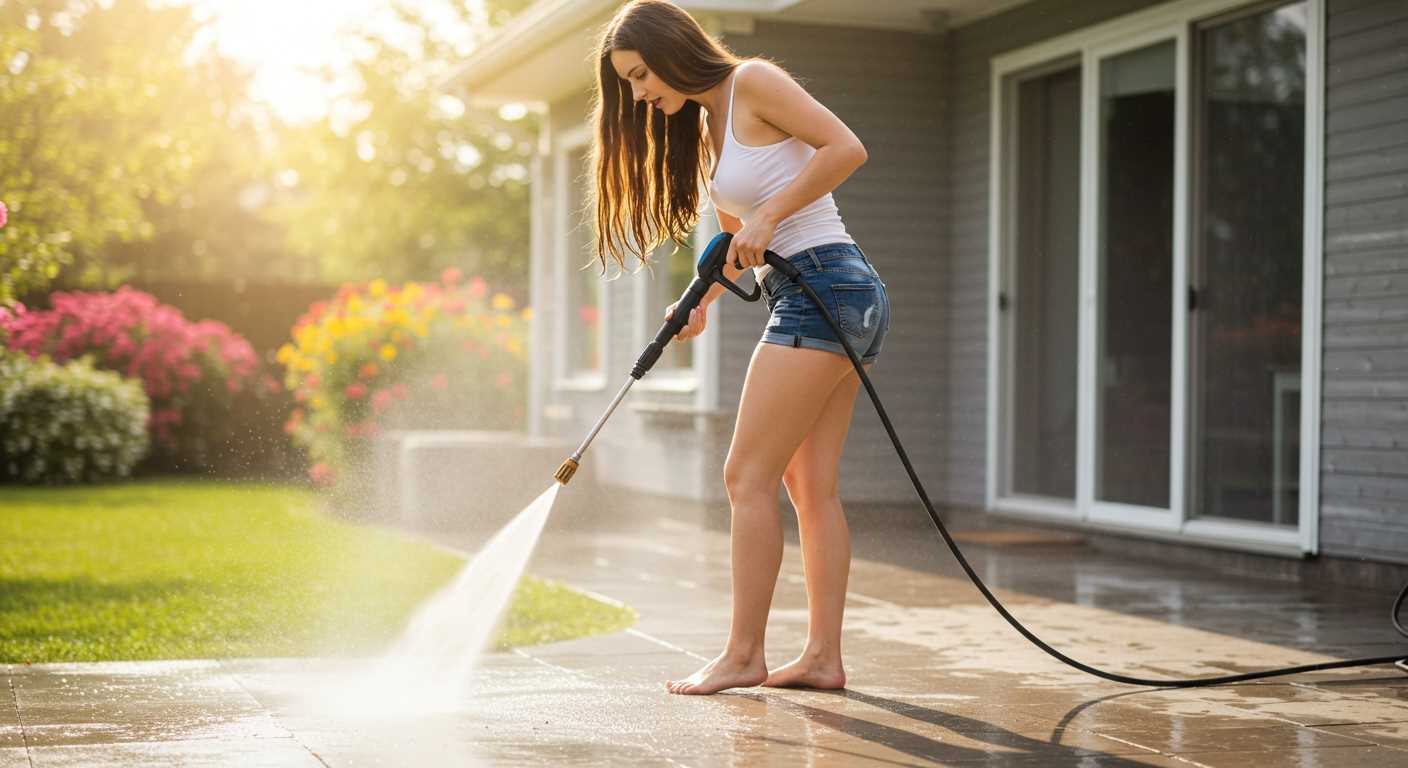
Direct application of high-pressure cleaning equipment on outdoor plastic surfaces is generally safe, but caution is paramount. I remember the time I tackled a stubborn patio set that had weathered years of exposure. Using a high-velocity stream, I managed to remove dirt and grime effectively, revealing the original colour beneath layers of filth.
However, not all plastic materials respond the same way. While items like garden furniture and decking can withstand the force, some delicate plastics may suffer damage. I learned this the hard way when I accidentally chipped the edge of a lightweight chair. Always test in a discreet area first; this simple step can save a lot of hassle.
Adjusting the nozzle is vital for optimal results. A wide fan spray is ideal for general cleaning, while a concentrated beam can be too harsh. I’ve found that maintaining a distance of at least 30 cm helps prevent unwanted marks or damage. Using a mild detergent can also enhance cleaning without compromising the integrity of the material.
In my experience, rinsing thoroughly after cleaning is essential. Residual detergent can lead to discolouration or attract more dirt over time. A quick rinse not only removes any leftover soap but also helps maintain the longevity of the plastic surfaces.
Understanding the Types of Plastic Suitable for Pressure Washing
High-density polyethylene (HDPE) and polypropylene (PP) are two robust types often seen in outdoor furniture, storage containers, and play equipment. Both withstand high water pressure and aggressive cleaning solutions. I recall tackling a weathered HDPE garden chair that had accumulated grime over the years. A gentle spray revitalised it without any damage.
Polyvinyl chloride (PVC) is another contender, frequently used in pipes and outdoor structures. While it can endure pressure cleaning, one must be cautious with the nozzle distance. I once cleaned a PVC fence and maintained a safe distance to prevent any warping.
Acrylic and polycarbonate are common in various applications, including protective shields and window panels. While they can endure some cleaning, I recommend a lower pressure setting to avoid scratches. My experience with an acrylic bird feeder taught me that a soft touch yields the best results.
On the other hand, polystyrene and low-density polyethylene (LDPE) are less resilient. I’ve encountered issues with LDPE when cleaning garden accessories, as they can warp or crack under high pressure. It’s better to stick with manual cleaning methods for these materials.
For any type, always test a small, inconspicuous area first. I’ve learned that even sturdy materials can react differently based on their age and exposure. Taking this precaution can save time and prevent mishaps.
Recommended Pressure Settings for Washing Plastic Surfaces
For optimal results, select a pressure range between 1200 and 1500 PSI when cleaning surfaces made of synthetic materials. This setting effectively removes grime and stains without causing damage. Higher pressures, such as 2000 PSI or more, may lead to surface degradation, especially with softer plastics.
Adjusting Nozzle Types
Utilising the correct nozzle is crucial. A fan tip nozzle, typically 25 to 40 degrees, disperses the water effectively. This reduces the impact force on the surface, ensuring a thorough yet gentle cleanse. Avoid using a narrow stream nozzle as it concentrates the pressure too much, risking potential harm.
Cleaning Techniques
Always keep the cleaning device at least 12 inches away from the surface. This distance helps to mitigate the risk of scratches and gouges. Move the nozzle in a sweeping motion to ensure even cleaning, and pay extra attention to heavily soiled areas, allowing extra time for detergent to break down stubborn grime.
For those interested in maintaining cleanliness in aquariums, consider checking out how to clean a new fish tank for additional tips and guidance.
Identifying Potential Risks of Using a Pressure Washer on Plastic
Excessive force can lead to significant damage. I recall a time when I was cleaning a plastic garden furniture set. I set the machine too high, thinking it would speed up the process. The result? A series of deep scratches and a few cracked pieces that were beyond repair. It’s critical to assess the condition of the material before proceeding.
One common issue is the risk of warping. Certain types of synthetic materials are susceptible to heat generated by high-pressure streams. On a bright sunny day, the combination of heat and force can distort the shape of the item, which is something I learned the hard way. Always check the manufacturer’s guidelines, as they often provide insights on the durability of the material.
Another aspect to consider is the potential for degradation over time. Even if an item appears sturdy, repeated exposure to high pressure can weaken its structure. I’ve seen this happen with older garden pots that seemed fine initially but eventually became brittle and cracked after multiple cleanings.
It’s also wise to avoid using a narrow nozzle tip for delicate surfaces. I once made the mistake of using a zero-degree nozzle on a plastic surface, thinking it would provide a thorough clean. Instead, it caused surface pitting and left unsightly marks. A wider tip distributes the force more evenly, reducing the risk of damage.
Lastly, be cautious of any attachments that could inadvertently scratch or gouge the surface. I’ve had my share of experiences with brushes that seemed harmless but ended up leaving behind scratches. Always inspect the tools you plan to utilise and opt for softer materials when dealing with sensitive surfaces.
Best Practices for Pressure Washing Plastic Furniture
Start with a thorough inspection of the furniture to identify any cracks or weak spots. This helps avoid further damage during the cleaning process. If any issues are found, consider repairing them before proceeding.
Choose the right nozzle. A fan spray nozzle (25 or 40 degrees) is ideal for delicate surfaces, while a zero-degree nozzle can cause harm if used too close. Maintain a distance of at least two feet from the surface to prevent etching or gouging.
Before cleaning, rinse the furniture with plain water. This removes loose dirt and debris, allowing for a more effective clean. After rinsing, apply a suitable detergent designed for outdoor use. Let it sit for a few minutes to break down stubborn grime.
When ready to clean, direct the water stream at a slight angle to the surface. Move the nozzle in a sweeping motion, not lingering on any one spot. This technique ensures even cleaning without risking damage.
After washing, rinse thoroughly to remove all detergent residues. Leftover soap can attract dirt, negating the hard work done. Once rinsed, allow the furniture to dry completely before applying any protective products.
Consider using a UV protectant after cleaning. This can help shield the materials from sun exposure, prolonging their lifespan. Regular maintenance, including periodic cleaning, prevents build-up and keeps the furniture looking new.
Lastly, always follow the manufacturer’s recommendations for cleaning methods and products. Adhering to these guidelines ensures the longevity of your outdoor pieces while keeping them in top condition.
How to Prepare Plastic Items for Pressure Washing
Before commencing the cleaning process, ensure all items are free from loose dirt and debris. A quick rinse with a garden hose can help dislodge any particles that could cause scratches during the washing phase.
Step-by-Step Preparation
Follow these specific steps to prepare your items:
- Check for Damage: Inspect all surfaces for cracks or brittleness. If you spot any signs of wear, reconsider the approach.
- Remove Accessories: Detach any removable parts, such as cushions, fasteners, or decorative elements that could be damaged.
- Secure Surroundings: Cover nearby plants or surfaces that might be adversely affected by the high force of the water.
- Gather Cleaning Supplies: Have a mild detergent or plastic-safe cleaner on hand for any stubborn stains.
Optimal Settings and Techniques
Adjust the equipment to a lower setting initially to gauge how resilient the material is. Start with a wide spray nozzle to distribute the force evenly and avoid concentrated pressure on any single area. Always keep the nozzle at least 30 cm away from the surface to prevent damage.
For additional insights on safe and effective cleaning techniques, check out a few tips on how to use your power pressure washer cleaner safely and effectively.
| Preparation Step | Description |
|---|---|
| Check for Damage | Look for cracks or wear that might worsen during cleaning. |
| Remove Accessories | Take off any parts that could be damaged or impede the cleaning process. |
| Secure Surroundings | Protect nearby areas from debris and water damage. |
| Gather Supplies | Have a suitable cleaner ready for tough stains. |
Choosing the Right Nozzle for Washing Plastic Materials
For optimal results, selecting the appropriate nozzle is key. A fan spray nozzle with a wider angle, typically 25 to 40 degrees, is preferred for delicate surfaces. A narrower stream can lead to unwanted damage, especially on softer materials.
Types of Nozzles
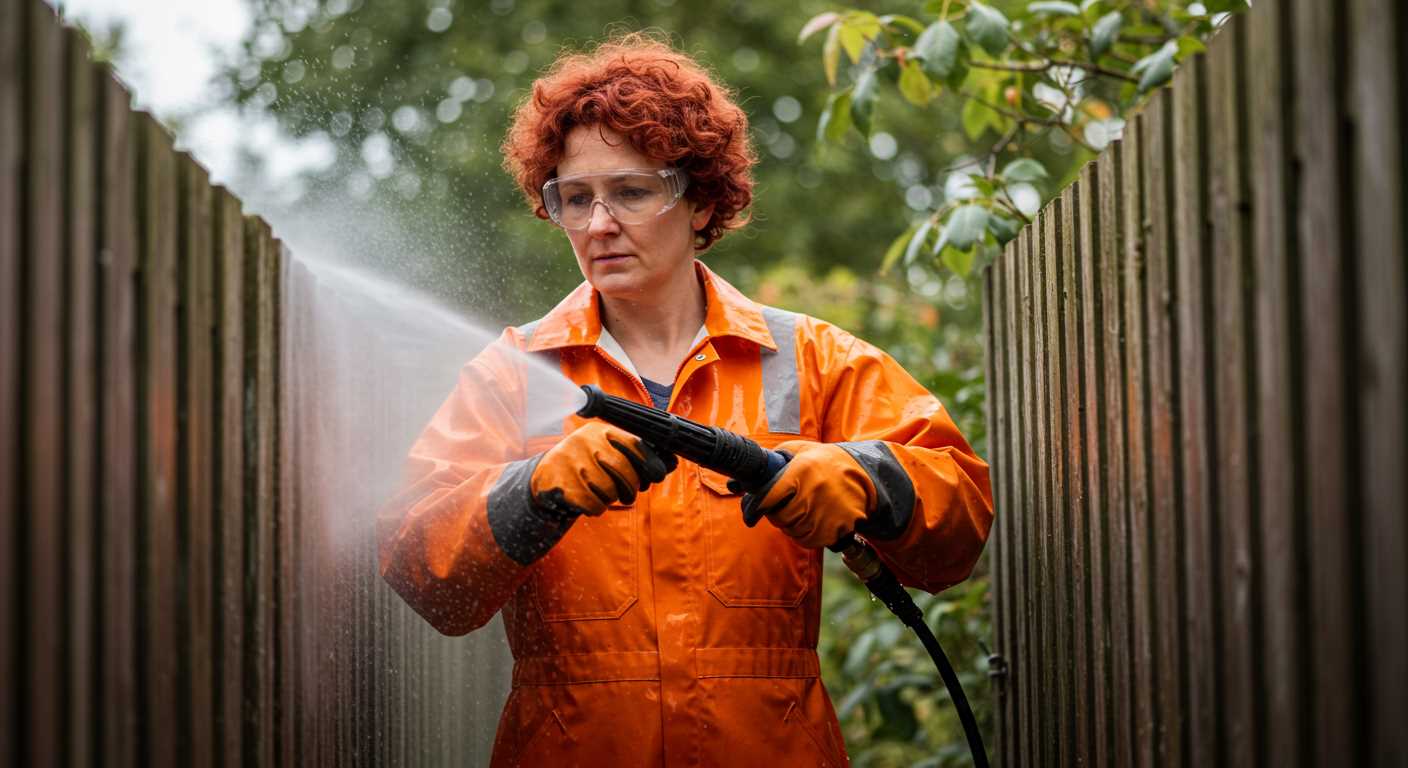
Three main types to consider include:
- 0-degree nozzle: Creates a concentrated stream, ideal for tough stains but risky on fragile items.
- 15-degree nozzle: Suitable for heavy-duty cleaning, yet caution is needed on less durable surfaces.
- 25-degree and 40-degree nozzles: These are the safest choices for most synthetic furnishings, offering a gentle spray that cleans effectively without causing harm.
Personal Experience
Once, I tackled a set of outdoor chairs made from a common synthetic. I started with a 15-degree nozzle, thinking it might speed up the job. The result was a couple of scratches that required touch-up paint. Switching to a 25-degree nozzle transformed my approach, delivering a thorough clean without risking the integrity of the material.
Always keep in mind that the distance from the surface matters as well. Holding the nozzle too close, regardless of its type, can lead to damage. A distance of at least 12 inches usually works best. Adjusting both the nozzle type and distance ensures a clean surface without compromising its quality.
Post-Washing Care Tips for Plastic Surfaces
After tackling grime and stains on your outdoor items, certain steps can enhance longevity and appearance. Here are my recommendations based on years of hands-on experience.
1. Rinse Thoroughly
Ensure all detergent residues are washed away. Leftover cleaning solutions can lead to discolouration or damage over time. A gentle spray should suffice for this task.
2. Drying Techniques
- Opt for a soft, lint-free cloth to wipe down surfaces. This reduces the risk of scratches.
- If air-drying, place items in a shaded area. Direct sunlight can cause fading.
3. Regular Inspections
Post-cleaning, inspecting for cracks or wear is crucial. Early detection allows for timely repairs, preventing further deterioration.
4. Protective Coatings
- Consider applying a UV protectant spray. This shields against sun damage and helps maintain colour vibrancy.
- For surfaces exposed to harsh conditions, a wax or sealant may add an extra layer of defence.
5. Storage Considerations
When not in use, store items in a cool, dry location. Avoid stacking to prevent pressure marks or indentations.
6. Seasonal Maintenance
- Before winter, clean and inspect items for damage.
- Cover or store in a protected area to extend lifespan through harsh weather.
Implementing these strategies will keep your outdoor items looking fresh and prolong their use. Each step contributes significantly to preserving their integrity over time.
Common Mistakes to Avoid When Pressure Washing Plastic
Avoid using a high-pressure setting, as this can easily damage softer materials. During my years in the cleaning equipment industry, I encountered numerous instances where users unintentionally harmed items by opting for excessive force. Here’s what to keep in mind:
- Neglecting to test on a small area: Before tackling the entire surface, always try a less conspicuous spot. This helps gauge how the surface reacts to the cleaning method.
- Using incorrect nozzles: A wide fan spray is generally safer for delicate surfaces. Narrow nozzles can concentrate the force too much, leading to unwanted dents or scratches.
- Ignoring the distance: Maintaining the proper distance from the surface is crucial. Getting too close can result in damage, while being too far may not effectively clean the area.
- Forgetting about protective gear: Don’t overlook safety. Always wear eye protection and ensure that the area is free of bystanders. Strong streams can send debris flying.
- Rushing the process: Take your time. Patience is key to achieving a thorough clean without harming the materials involved. Quick movements can miss spots or lead to inconsistent results.
- Overlooking the weather: Washing in direct sunlight can lead to uneven drying, which may cause streaks. Try to work in the shade or during cooler parts of the day.
- Failing to secure loose items: Ensure that any loose parts, like cushions or decorations, are removed from the area. They can get damaged or cause distractions during cleaning.
By steering clear of these common pitfalls, the cleaning process becomes smoother and more effective, ensuring that your items remain in great condition.
FAQ:
Can I use a pressure washer on plastic surfaces without damaging them?
Yes, you can use a pressure washer on plastic surfaces, but caution is advised. It’s important to select the appropriate pressure setting. Generally, a lower pressure setting (around 1200-1500 PSI) is recommended to avoid causing any damage to the plastic. Additionally, keep the nozzle at a safe distance and use a wide spray pattern to distribute the pressure evenly.
What type of plastic can withstand pressure washing?
Most outdoor plastics, such as those found in patio furniture, garden equipment, and plastic siding, can withstand pressure washing. However, softer plastics like some types of PVC or thin plastic components may be more susceptible to damage. Always check the manufacturer’s guidelines for cleaning recommendations before proceeding.
How far should I hold the pressure washer from the plastic surface?
It is generally advised to hold the pressure washer nozzle about 2 to 3 feet away from the plastic surface. This distance helps prevent concentrated pressure that could lead to scratches or dents. Adjust the distance based on the condition of the surface and the power of your pressure washer.
Are there any specific cleaning solutions I should use with a pressure washer on plastic?
While many people use just water, adding a mild detergent specifically designed for pressure washing can enhance cleaning effectiveness. Make sure the detergent is safe for plastic surfaces and follow the manufacturer’s instructions for dilution and application. Rinse thoroughly after cleaning to avoid any residue.
What precautions should I take to avoid damaging my plastic items while pressure washing?
To avoid damaging plastic items while using a pressure washer, take the following precautions: use a lower pressure setting, maintain a safe distance from the surface, use a wide spray nozzle, and avoid concentrating the spray on one area for too long. It’s also wise to inspect the plastic items for any cracks or weaknesses before cleaning, as these could worsen with pressure washing.
Is it safe to use a pressure washer on plastic surfaces?
Using a pressure washer on plastic surfaces can be safe, but several factors should be considered. First, check the manufacturer’s recommendations for the specific plastic item you’re cleaning. Some plastics can withstand high pressure, while others might be more susceptible to damage. It’s generally advisable to use a lower pressure setting and maintain a safe distance from the surface to avoid any potential harm. Additionally, using the correct nozzle can help to disperse the pressure more evenly, reducing the risk of damage.
What precautions should I take before pressure washing plastic items?
Before pressure washing plastic items, it’s important to take a few precautions. Start by inspecting the plastic for any cracks or weaknesses, as these could worsen during cleaning. If possible, test a small, inconspicuous area first to see how the plastic reacts to the pressure. Use a wide-angle nozzle to spread the water pressure and keep the nozzle at least 12 inches away from the surface. Additionally, avoid using hot water, as it can cause some plastics to warp. Finally, ensure that any electrical components are disconnected and covered to prevent water damage.

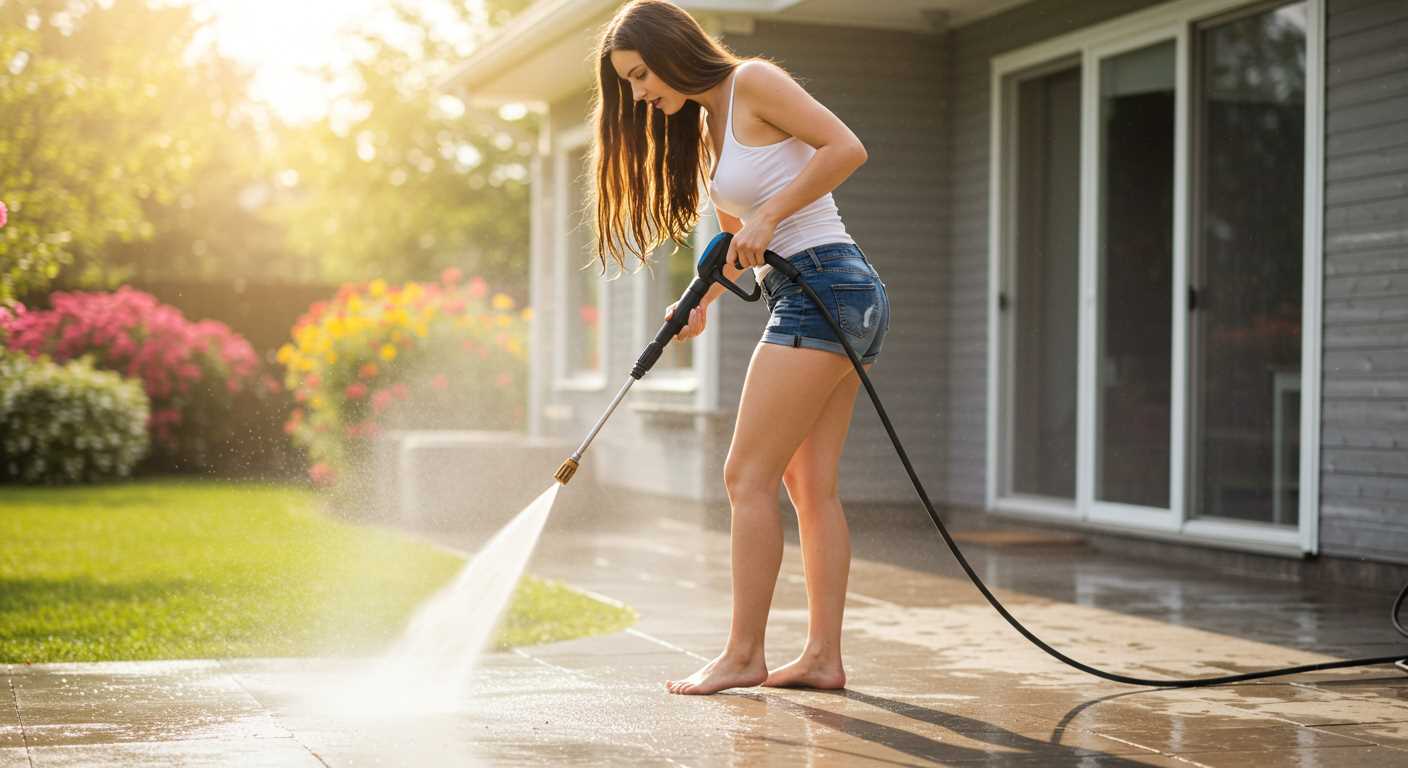



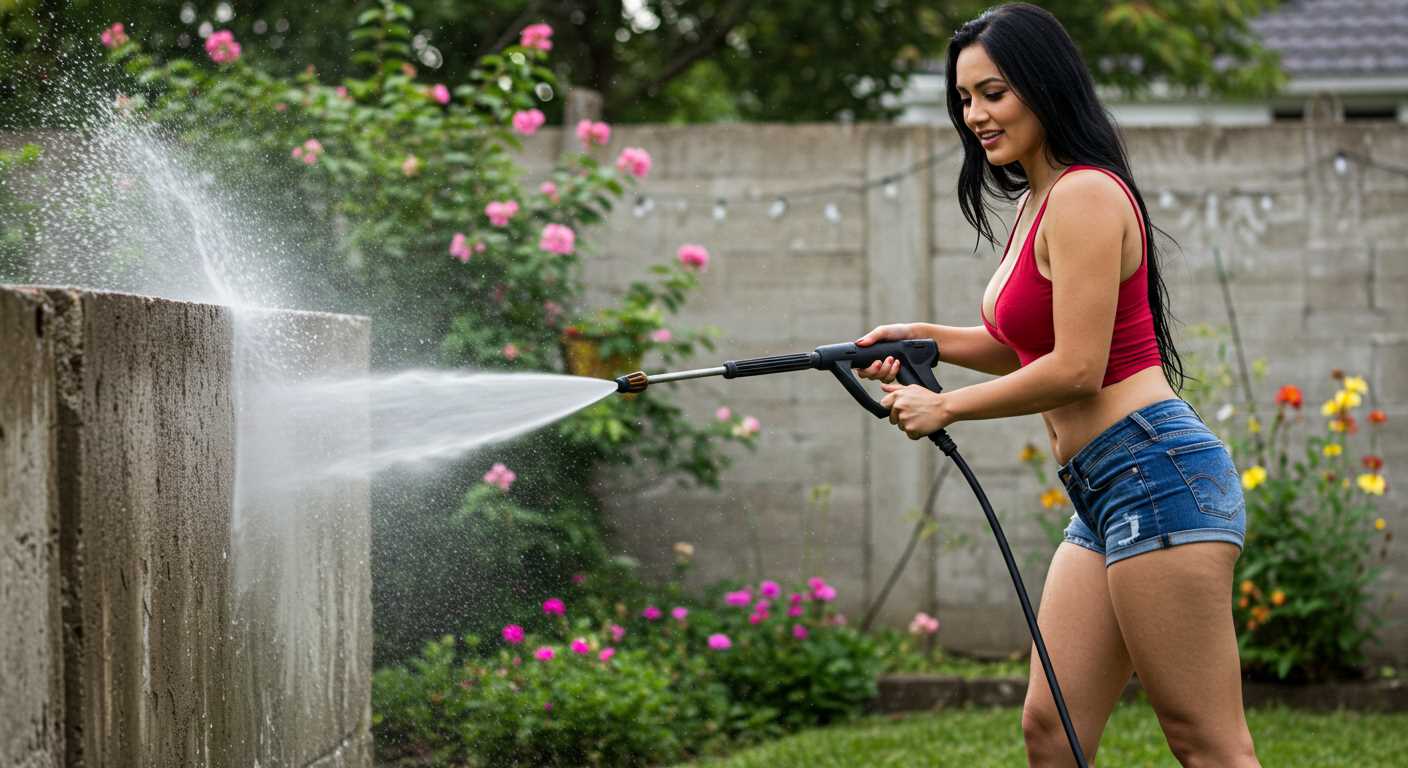
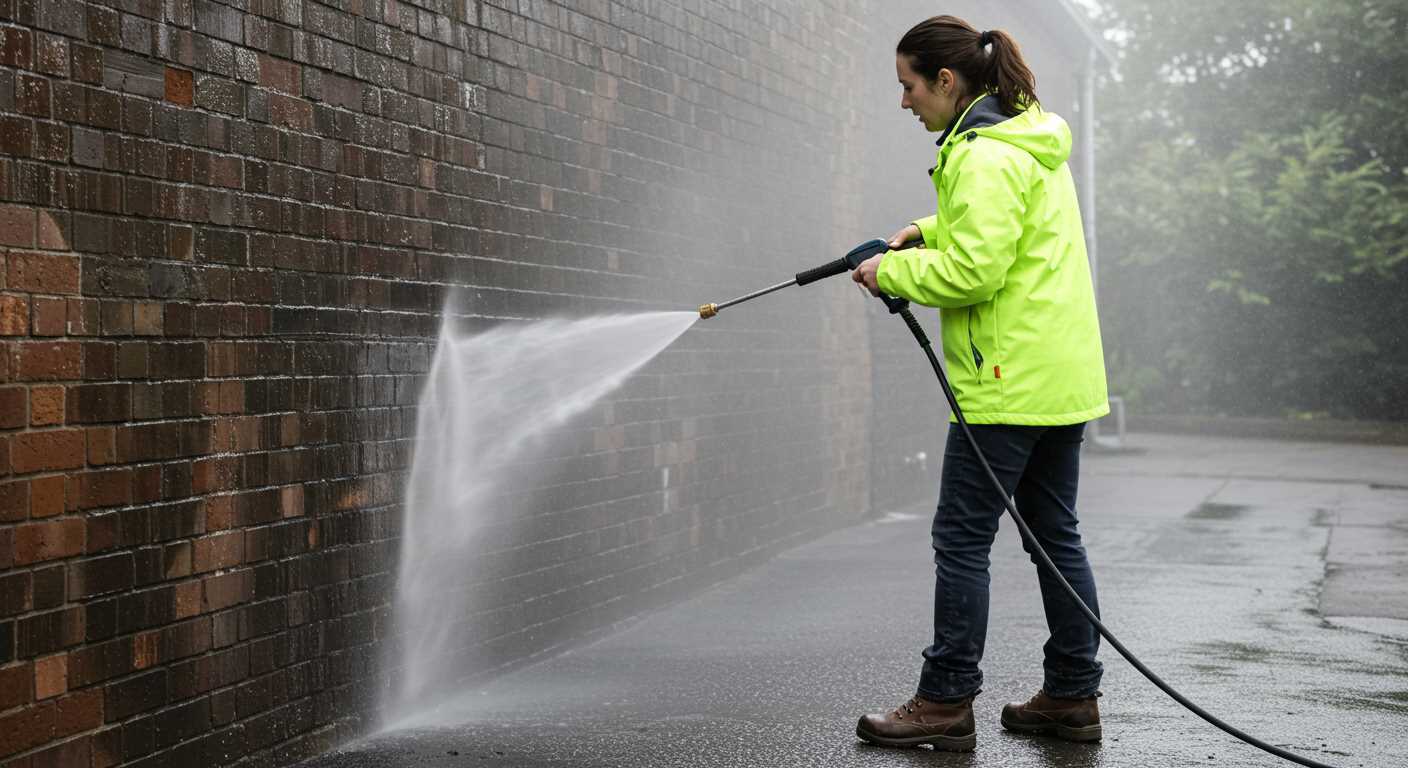
.jpg)


